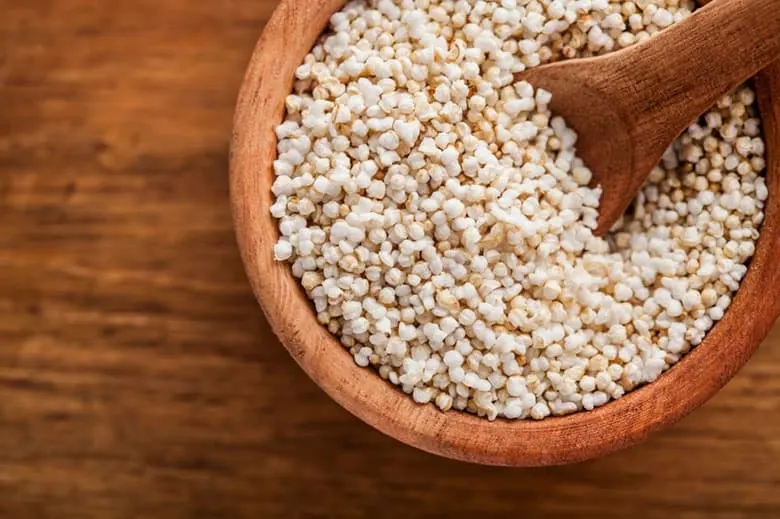What do you recall when you hear about corn, barley, oats, wheat, or rice?
If you are thinking grains, you’re right because they members of the Poaceae family.
But have you heard of a weed that people harvest and treat as a grain?
That’s Amaranth, a pseudocereal that has nothing to do with the Poaceae family but makes an excellent cereal grin.
And that is because it offers everything that a cereal grain would. What it lacks in size like unlike other cereals makes up with its nutritional properties.
The Aztecs called it ‘the immortality food,’ and it even gets a mention in Milton’s Paradise Lost and Aesop’s fables. What really is Amaranth?
What is Amaranth?

Amaranthus, or commonly known as Amaranth, comes from over 70 species and forms; you can find it in almost every continent.
Although only a few are cultivable owing to their texture of leaves and size of seeds. The rest of the species are weeds.
The three main species that produce grain and undergo cultivation are A. cruentus, A. hypochondriacus, and A. caudatus.
Indeed they produce grains, but they are technically seeds just like quinoa.
The size of the seed is similar to sesame seeds with a yellowish tint. They are quite crunchy when cooked. But how do they taste?
What Does Amaranth Taste Like? Does Amaranth Taste Good?

The taste of Amaranth is quite nutty and sweet and delightfully crunchy. The best part about this underdog grain is it is gluten-free.
Amaranth also goes by other names such as Chinese Spinach or Pigweed. At present day, the largest producer of Amaranth is China.
But it’s in extensive cultivation in other countries as well, such as Central America, Mexico, and some parts of the US.
If you seek a close comparison of Amaranth’s taste with other foods, you can imagine a cross between brown rice and wheat berries or whole wheat.
In terms of appearance, when raw, they look like sesame seeds. But when you cook it, it gets lustrous and resembles caviar.
All in all, Amaranth has a unique flavor and is quite versatile.
Now, the real question lies. Does Amaranth provide nutritional benefits? Indeed it does.
It is an excellent protein source with a fair amount of minerals such as manganese, iron, and phosphorous. Its USP is it is gluten-free because many are gluten intolerant.
To be concise, Healthline tells us precisely what 246-gram cooked Amaranth would offer in terms of nutrients.
Let us also enlighten ourselves with the health benefits this incredible pseudocereal offers.
- The antioxidants help combat free radicals and keep heart disease at bay long with slowing down aging.
- It slows down the production of immunoglobulin E to help reduce inflammation
- Amaranth reduces bad cholesterol yet maintains good cholesterol
- It contains lysine, unlike most grains, and protein equivalent to animal proteins.
How to Cook Amaranth?

It’s tasty and nutritious. But, you need to cook it first to get what it offers.
How do you do it? Well, to begin with, you can cook it whole like rice, or you can ground it as flour.
Do make sure to contain the seeds in an air-tight jar for freshness, or you may refrigerate it.
Whole Amaranth cooks beautifully like rice, and you could incorporate it soups, chili, or stews. With the flour, you can make bread, muffins, pizza base, and pancakes.
Just make sure you combine wheat flour because Amaranth doesn’t contain gluten.
The leaves of Amaranth turn out great steamed or fried like you would with other leafy greens.
Here are some ways you can use Amaranth.
- You can mix lentils and Amaranth as a binding agent and make patties for your burgers.
- You can cook it as a substitute for porridge yet get all the nutritional benefits.
- Eat it as a snack by popping it like you would with rice or corn.
- Bake it without adding flour if you are gluten-intolerant.
- It adds great texture, taste, and nutrition when added to soups.
- If you are fond of Risotto, you may as well just replace rice with Amaranth and still enjoy the dish the exact same way.
- Add Amaranth to your favorite smoothies and get more protein and fiber
- It is an excellent alternative to pasta, couscous, or rice.
Conclusion

Amaranth may have been around for thousands of years now but gained popularity only recently.
Unfortunately, it is quite underrated, and not many people turn to it due to ignorance. It’s a superfood, and you could add to ante up your diet.
Amaranth has everything healthy and nutritious to offer besides being tasty and versatile.

What Does Amaranth Taste Like? Does Amaranth Taste Good?
Ingredients
- Amaranth
- Ingredients from your favorite recipes
Instructions
- Depending on the recipes you choose, the taste can vastly differ.
- For authentic results, it is important to choose a recipe that will highlight the original flavor.
- Have fun experimenting with different recipes and taste tests!
